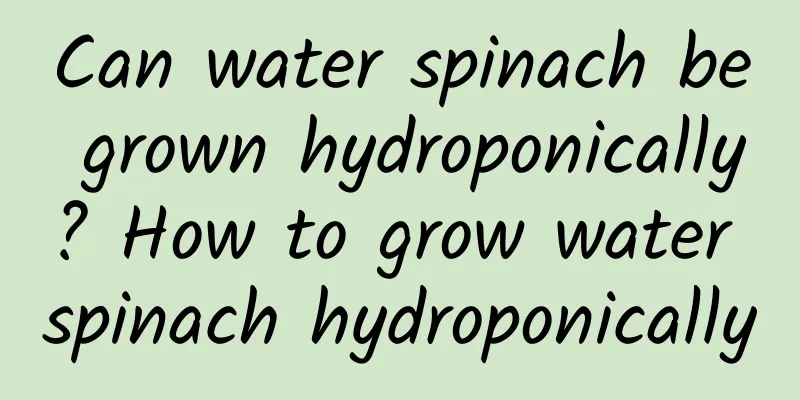A quick rooting method for passion fruit cuttings (only four simple steps to complete the cutting survival rate)

First, passion fruit cutting time:The most common time for passion fruit cuttings is spring and autumn. Because the cold winter in the north can easily freeze the seedlings, it is best to do it in spring. It is best to follow the local temperature when cutting passion fruit. It is easiest to survive when the temperature is between 18 and 28 degrees Celsius. A high humidity environment can effectively improve the survival rate. In autumn, it is important to build a simple greenhouse to increase the humidity of the environment. Second, passion fruit cuttings:The best branches for passion fruit cuttings are those that have grown for a year. Such branches have strong cell activity and are easy to root. The cell activity of branches that are too old is reduced, and it is not easy to take root when cuttings are cut. Branches that are too tender are prone to water loss, or they may fall over and rot the top buds. The treatment of cuttings is more complicated. The bud point at the top of the branch needs to retain a 0.5 cm long vine. When pruning the lower part of the branch, cut it off about one centimeter below the bud point. The length of the branch is about 20 cm. Keep 4 opposite buds and remove all the others. Before cutting, the wound of the branch needs to be dried, and then soaked in a rooting agent containing "indoleacetic acid" one hour before cutting. Soak for about half an hour, and then cut. Third, the planting material for passion fruit cuttings:If the cuttings are to be transplanted after cuttings, freshwater river sand can be used for cuttings. The river sand is clean and sterile, and the temperature difference between day and night is large, which is conducive to rooting. However, passion fruit needs a lot of nutrients to grow in the later stage. River sand has no nutrients and poor fertilizer retention. Therefore, transplanting is necessary. If you do not want to transplant after cutting, you can use the planting material layering method. Now under the planting container, use freshwater river sand + humus soil + farmland soil + decomposed chicken manure fertilizer to mix into flower soil in a ratio of 1/4. Then put it in the flower pot, occupying about 2/3 of the height of the flower pot. Cover the flower soil with about 8 cm of river sand. Then proceed with cuttings. Fourth, passion fruit cutting precautions and management:1. Disinfect the planting material before cutting. Use "Carbendazim" diluted with water, spray the planting material, leave it overnight, and expose it to the sun for about three days. Use tap water to spray the planting material before cutting . 2. After the passion fruit is cut, it is not necessary to water it immediately. You can keep the planting material slightly moist for 2 to 3 days before watering it. To keep the vines moisturized, it is best to use spraying 3 to 5 times a day . 3. After the cuttings, do not expose the passion fruit to direct sunlight. First, use the shade method to let the passion fruit grow in a location with bright light for about 15 days. Then slowly increase the light and let the passion fruit grow in a location with 2 to 3 hours of light in the morning or evening. 4. When watering the passion fruit cuttings, flexibly apply the method of "don't water unless it's dry, and water thoroughly when it's dry". When the surface of the flower soil is dry, you can water it immediately. Use auxiliary spraying to replenish water 2 to 3 times a day. |
<<: How to grow Clivia beautifully (how to grow Clivia fast)
>>: How to quickly root the newly bought lucky bamboo (tips for fast rooting of lucky bamboo)
Recommend
How to grow green bamboo
1. Soil selection It is not very picky about the ...
Cultivation method of Camellia Impatiens
Cutting propagation of Impatiens balsamina Camell...
Rose cutting time and method
1. Cutting time There are not many restrictions o...
How to pick leaves from red maple bonsai, it is very ornamental!
Leaf picking method Leaf picking It is generally ...
How to grow cymbidium
1. Breeding environment 1. Soil: It is best to us...
How to manage loofah planting to produce more loofahs?
Loofah, as a common vegetable on our table, can b...
How to grow peach blossoms in winter
1. The importance of winter maintenance Generally...
She planted succulents in a basket and carried it out to buy groceries. Everyone passing by turned around to look at her!
If you do this with succulent baskets, the return...
When does the cardinal coral bloom?
Flowering period of red cardinal coral The flower...
Causes and treatments of yellow leaves of green radish
1. Inappropriate light exposure 1. Reason: The ma...
What should you pay attention to when using pure milk to water flowers?
It is very good to water flowers with pure milk. ...
What is the function of peacock arrowroot
Ornamental The peacock plant has beautiful leaves...
How to keep lucky bamboo from dying in winter? Is it good to grow lucky bamboo in the bedroom?
1. How to keep them alive in winter 1. Control th...
How often should I water the aloe vera? How often should I water the aloe vera?
How often should I water my aloe vera? It is gene...
What is the use of keeping golden fingers at home
The ornamental effect of gold finger The golden f...









